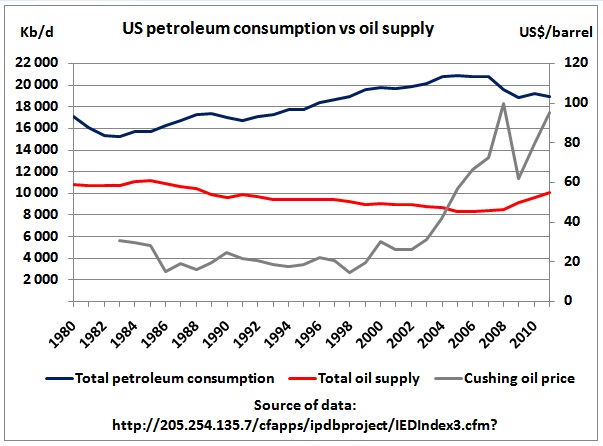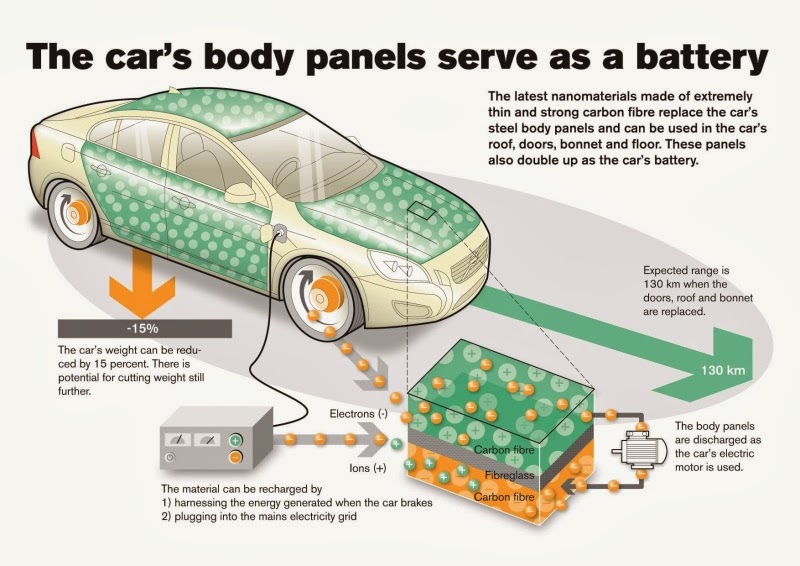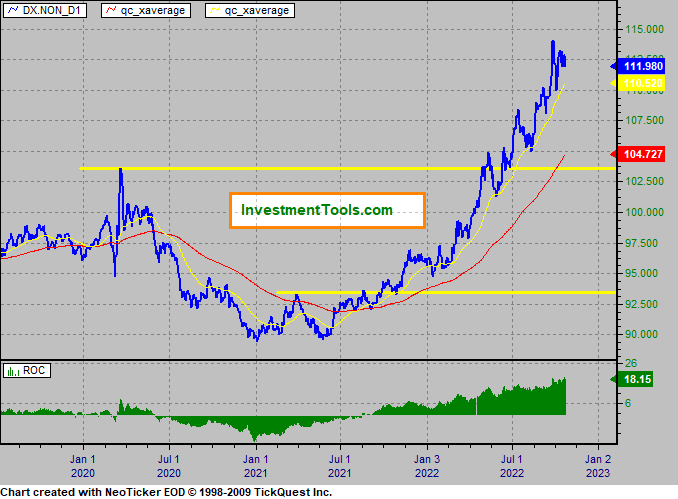一般的群眾募資,將贊助者投入的資金視為捐贈性質的,但對創業者或其他人士而言,這也是一個良好的籌資方式,進而發展出了捐贈性質、債權性質、股權性質數種類型。
台灣最大群眾募資公司是 flyingV,2012年4月開始營運。總集資案件390件,其中185件成功,總集資金額約 6,800萬元.
Crowdfunding Will Make 2013 The Year Of The Gold Rush 2013年是群眾募資的淘金熱
 |
| 群眾募資增率很高 ( Crowd-funding growth rate is much higher ) |
While 2012 was an amazing year for crowdfunding, 2013 should outdo it. Here are my half dozen predictions for the year – and why this new form of capital formation will continue to soar. ( 儘管2012是一個了不起的一年crowdfunding , 2013應該超越它。這裡是我的半打預測年度 - 為什麼這個新的資本形成形式將繼續飆升。)
1. The Global Crowdfunding will double in annual revenue to $6 billion in 2013 ( 2013, 全球Crowdfunding 將在年籌資翻倍至60億 )
Crowdfunding was exploding quietly in 2012 for the non-believers and loudly for the embracers between March 8, 2012 and President’s Obama signing of the JOBS Act into law on April 5, 2012. Some of the largest sites in the world for rewards and donations – Kickstarter, Indiegogo, Grow VC and Rockethub – saw their daily traffic and donation amounts double within a few months. Kickstarter has had its issuers raise a cumulative $200+ million in sales 2008-2011 to reach an addition $145+ million to a total of $345+ million by year end 2012. To give you an example, LendingClub reached $75+ million per month in debt lending as a crowd funding platform in November 2012. It is the largest U.S. peer-to-peer lender and will hit an additional $1 billion in loans 2013 vis-a-vis the cumulative $1 billion it lent since inception 2007.
 |
| 2011 群眾募資增率99%, 捐獻占48.2% |
The global predictions in 2013 for the debt crowdfunding industry are strong. LendingClub will add almost $1 billion in 2013 to the total of $3 billion reached in 2012. There are 34 additional debt crowdfunding firms growing globally, including Zopa ($400 million since inception) and Prosper ($250 million). The balance of the $1.25 billion will come from donations and rewards-based crowdfunding, which will provide the bulk of growth in 2013 and 2014.
2. The EU will embrace crowdfunding laws ( 歐盟將出來 CrowdFunding 法律 )
Led by the Directorate General for Enterprise and Industry, the EU Commission will have a couple more workshops Q1-3 2013 and create a proposal towards making crowdfunding for equity a legal option by Q4 2013. It will take EU 1,000 days to make such a law legal from the day a proposal is created. My prediction is that the EU is lethargic in pan-European law implementations.
3. Crowdfunding platforms will turn into a commodity ( Crowdfunding 平台將變成商品 )
The 700+ crowd funding sites today will increase to 1,500 by Q2 2013 and quietly contract under the hood to 200 well-financed and revenue-generating sites by Q1 2014. Sites like Crowd Valley with 300 plus private label crowd funding platforms offered free to organizations will start charging for these services. These private label extensions will lead to the growth of more community sites CrowdTilt which allows any site to start group charging and collecting money from several projects and thousands of donors.
using crowd funding but the back end technology will be run by a few dozen leading platforms. In parallel we will see 1,000 more sites using crowd funding with free API technology from firms like
4. MA will not fuel Crowd Funding in 2013, but international expansion will ( 2013年併購並不會刺激人群的資金,群眾募資將往國際擴張 )
 |
| 群眾募資增率很高, 消費性、IT服務、生技健康、軟體類就占66% |
5. Broker-dealers will lead the “Rich Man’s Crowd Funding” strategy ( 經紀交易商將帶領“富人群眾籌資”戰略 )
 |
| 群眾募資北美占82% |
The smallest broker dealers will consist of crowdfunding for equity players licensed with FINRA that use “Rich Man’s Crowd Funding.”
What’s that? Currently you raise private capital mainly through SEC exemptions. Most common is Regulation D, 506 which allows you to have only 35 non-accredited investors and an unlimited amount of “rich people” allowed to invest. To be accredited you have to have earned $200,000 ($300k for married couples) the last 2 years or have a net worth over $1 million (and you must exclude the value of your home). Reg D, 506 as we call it, stood for $900 Billion in capital raised in 2011.
The large distribution online promised by crowd funding technology will empower broker dealers to differentiate and use the crowdfunding as a tool for their clients. It was presented to the National Investment Banker Association Spring 2012 and today we have seen recent movements of SoMoLend and CrowdFunder, which signed up with the leading broker dealer Gate Technology whose back end crowd funding platform is run by visionary CEO Vince Molinari. We will see the two to three dozen crowdfunding-for-equity pure plays partner up with broker dealers in Q1 2013 and start pursuing SEC broker-dealer transactions under the Rich Man’s Crowd Funding option, as everyone waits for crowdfunding to become legal.
We predict Crowd Funding for Equities will not become a legal SEC / FINRA regulated program in 2013 but rather by January 2014 because of the byzantine processes required for the SEC and FINRA to interpret the JOBS Act and implement the law. See Obama’s 10 Steps with SEC & FINRA to Legalize US Equity Crowd Funding.
6. By July we will see issuers raise $1 million in capital per week ( 到七月,我們將看到發行人每週將籌集到100萬美元資金 )
By year end we will see a total of 104 startups in 2013 having raised a minimum $1 million through crowd funding in 2013. Crowdfunding will be a generally accepted tool to raise capital and the general public explosion will come in 2014 when corporate America officially embraces it. ( 到今年年底,我們將看到一共有104家創業公司在2013年曾在2013年提出並籌得了一個最低百萬美元群眾集資。 Crowdfunding 將是一個公認的籌集資金工具並在2014年爆炸性公眾性的會,美國企業將正式擁抱它。)
 |
| Kickstarter 實況 ( Kickstarter status ) |
Crowdfunding Platforms Raised Almost $1.5B in ’11, Up 72% Y-O-Y
Crowdfunding platforms (CFPs) raised $1.47 billion in 2011, up 72% from $854 million in 2010, and almost tripling the $530 million raised in 2009, finds massolution in a May 2012 report. The study predicts worldwide funding volume to almost double this year to $2.8 billion, driven by a 300% growth in equity-based (for financial return) and reward-based (for non-financial rewards such as tokens) crowdfunding, with lending-based (75%) and donation-based (50%) funding also to experience solid growth.
The report defines lending-based funding as a crowdfunding model in which funders receive fixed periodic income and expect repayment of the original principal investment.
Number of CFPs Booms
Data from the “Crowdfunding Industry Report” indicates that as of April 2012, there were an estimated 452 crowdfunding platforms active worldwide, forecast to grow to 536 by the end of the year, representing a 60% year-over-year increase. The majority of CFPs are based in North America, with a high concentration also seen in Europe.
The reward-based category is the largest in terms of the number of CFPs, while the lending-based category is the smallest. Basing the analysis on a sample of 143 CFPs, the report determines that the donation-based (50%) and lending-based (41%) categories are growing at a relatively similar pace, though both markedly slower than the reward-based category, which boasts a 79% compound annual growth rate (CAGR). The equity-based category sports the fastest growth rate, at 114%.
Other Findings:
- The total number of crowdfunding campaigns in 2011 reached close to 1.2 million, with almost all occurring in North America (532,000) and Europe (654,000).
- Equity-based crowdfunding platforms produce the largest amount of funds on a per-project basis. 21% of the funds raised by these platforms in 2011 were for projects that drew $250k or more in funding, compared to just 6% for projects that drew less than $10k in total funding. (Note that this is based on a small sample size of 10 CFPs.)
- Donation-based and reward-based crowdfunding platforms draw the lowest levels of funding per project. 63% of the funds raised by these platforms were paid out to projects that drew less than $5k in funding. (This data is based on a sample size of 25.)
- It takes 2.84 weeks on average across all categories (from a sample of 83) to raise the first quarter of the funding goal, and 3.18 weeks on average to raise the last quarter. Lending-based campaigns take about half as much time to complete (4.8 weeks) as equity-based (10 weeks) or donation-based campaigns (10.2 weeks).
- 42% of CFPs (from a sample of 60) charge a transaction fee based on a percentage commission of funds paid out.
- About the Data: The Crowdfunding Industry Report is based in part on an industry survey conducted in Q1 2012 by Crowdsourcing.org, with analyses conducted by Crowdsourcing LLC’s research and advisory business, massolution, and significant research conducted via other reliable sources to complete the profiling of the global crowdfunding industry. The survey received over 170 responses from selected participants from Crowdsourcing.org’s Directory of Crowdfunding Sites, which contained 452 active crowdsourcing platforms at the time the survey was conducted. As the basis for the analyses, 135 submissions were selected from CFPs, based on a determination of being both comprehensive and high-integrity.
- 群眾募資年增率將高達62%募集資金達到60億,台灣應加速將群眾募資與微興櫃結合,讓台灣創業者資金充沛;
- 歐盟將推出群眾募資( CrowdFunding )法律,讓歐盟加速創業企業經濟發展速度;
- 台灣應加速將群眾募資與微興櫃結合,運用地方減稅方案讓台灣新創企業可以
- 由群眾募資至微興櫃
- 由微興櫃至興櫃,再由興櫃成功上市上櫃
- 結合個人減稅鼓勵政策,必能讓台灣再度高成長
- 台灣目前的稅制及台幣匯率遠比東協及大陸優惠稅率高,加入TPP、RECP對台灣經濟成長率幫助不大,更何況許多東協匯率對美元遠比台幣低15%,舊產業回台做出口的生意機率不高,唯有新創企業可以會投資台灣;
- 以台灣現行稅制是很難與東協、大陸拉動台商之優惠稅率競爭,只有靠新創企業及減免未來的稅率如遺產稅、房稅,可以讓 28兆的10%台灣資金投入新創企業;
- 營餘保留加收10%營所稅可以投資『新創企業』可抵減稅方式刺激台灣產業加速升級,讓像 TSMC、聯發科、鴻海每年就可投資 200家中小創新企業及1000個群眾募資案來發展 IOT ( Internet of things ),整上、中、下游加速產業升級;
- 台灣現行稅制對於投資新創公司,有賺錢賣超過 100張、賺超過 600萬都要抽很高稅,造成許多台灣投資新創公司都跑到海外去了,台灣只設子公司,上市才選擇要到台灣、香港及大陸上市,我也搞不懂馬總統真的在亂搞!





























